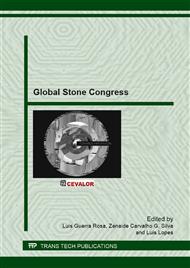p.3
p.10
p.20
p.31
p.39
p.48
p.57
p.65
Method for the Evaluation of the Reserve of a Metallurgical Quartz Deposit by Advanced Kriging Techniques
Abstract:
There are several different methodologies for the evaluation of the reserve of a mineral deposit. Traditionally, classic methods of volume computation for mineral deposits have been used to evaluate the reserve according to its commercial quality. Nevertheless, in previous works it has been demonstrated the functionality of the advanced kriging techniques applied to granite batholiths. Comparing fuzzy kriging techniques with universal classical kriging, it was concluded that the fuzzy techniques had good results for planning the selective mining of the ornamental rock deposit. Since geostatistical methods had good results, these techniques are applied to a metallurgical quartz deposit in this work. The objective of the investigation is to develop the most adequate technique for the determination of the different material qualities in this type of deposits, where the chemical composition of the mineral (aluminium oxide and impurity contents) mainly determines the grade. The obtained results show that the compositional kriging technique is more adequate than fuzzy methods for this type of deposits, allowing a sufficiently coherent prediction of the distribution of grades in the deposit. Based on the results, a 3D geostatistical model composed of cubed cells was done as well. The model provides a visual tool, easy to put into practice for the exploitation management. Keeping all this in mind, the selective mining of the reserves would be possible, being that fact necessary to compete in the rising, competitive world market.
Info:
Periodical:
Pages:
31-38
Citation:
Online since:
April 2013
Price:
Сopyright:
© 2013 Trans Tech Publications Ltd. All Rights Reserved
Share:
Citation:


